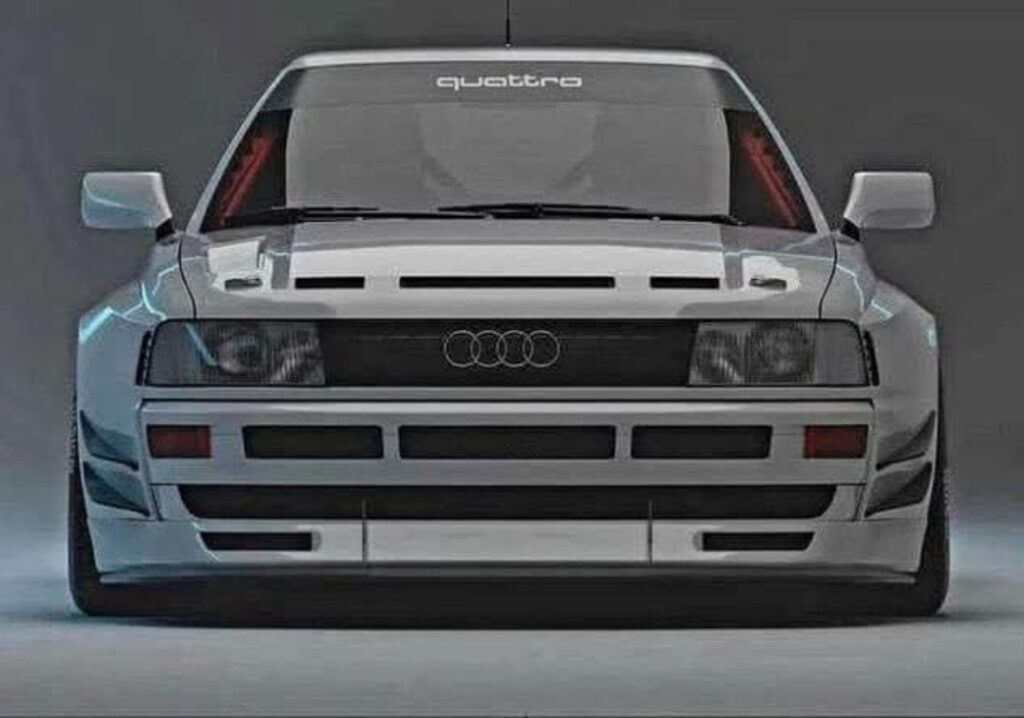Few cars have reshaped the trajectory of automotive engineering like the Audi Quattro. Launched in 1980, it didn’t just raise the bar for performance cars—it redrew the blueprint entirely. With its revolutionary permanent all-wheel-drive system, turbocharged inline-five engine, and bold rally pedigree, the Quattro wasn’t just ahead of its time; it invented its own timeline.
As we reflect on the legacy of the Quattro over four decades later, it’s clear that its influence still reverberates—not only through Audi’s DNA but across the entire high-performance automotive world.
Genesis of a Revolution
In the late 1970s, Audi was respected, but not yet feared. It lacked the performance image of rivals like BMW and Mercedes-Benz. That changed when engineer Jörg Bensinger observed how a military vehicle with four-wheel drive outperformed others in wintry tests. The idea sparked: what if that traction was available in a road car? The result would become the world’s first production car with permanent all-wheel drive—the Audi Quattro.
It made its debut at the 1980 Geneva Motor Show, pairing luxury coupe styling with rally-grade hardware. At a time when most performance cars were rear-wheel drive and struggled in poor weather, the Quattro offered grip, confidence, and a bold new driving experience. Its name, which simply means “four” in Italian, would soon become synonymous with cutting-edge capability.
Styling and Design: Brutalist Elegance
The Audi Quattro wasn’t subtle—and that was exactly the point. While based on the Audi 80 platform, it featured a distinctively angular widebody with flared wheel arches, aggressive bumpers, and an integrated rear spoiler. It looked fast even when parked—a low-slung wedge of German intent.
The design was purposeful. Wide arches housed larger wheels and tires needed for both traction and aesthetics. The quad-headlight layout and large front grille gave it instant presence. And while the lines were boxy, they were brutally aerodynamic for the era.
Inside, the cabin was equally driver-focused: bolstered seats, analog gauges, and a manual gearbox. This was a machine built for engagement—not distraction. Today, the silhouette of the original Quattro remains a cult classic, with its brutalist simplicity aging like industrial art.
Engine and Performance: The Turbocharged Heart
At the core of the Quattro was its engine: a 2.1-liter turbocharged inline-five, producing around 200 horsepower in early versions. The sound it made was unmistakable—a deep, syncopated growl, equal parts mechanical and primal.
Later road-going models upgraded to a 2.2-liter version, while the rally variants—especially the Group B monsters—pushed well over 400 horsepower. What made the engine special wasn’t just power—it was delivery. Matched to a five-speed manual and supported by the all-wheel-drive system, the Quattro could launch off the line and maintain traction in conditions where other performance cars flailed.
Its power-to-weight ratio, turbo boost, and AWD synergy made the Quattro feel explosive and grounded. It redefined how a performance coupe could handle snow, gravel, and wet pavement—not as obstacles, but as playgrounds.
Rallying: Where Legends Are Forged
The Quattro might have been a game-changer on the street, but it became a myth in the forests, mountains, and deserts of global rally stages. Audi entered the World Rally Championship (WRC) in 1981, and it didn’t take long for the Quattro to make an impact.
1982 and 1984 brought Audi the WRC Manufacturers’ titles, and drivers like Michèle Mouton, Walter Röhrl, and Stig Blomqvist became household names—piloting the Quattro to stunning victories in snow-covered Sweden, icy Monte Carlo, and dusty Kenya.
The Quattro’s rally dominance culminated during the infamous Group B era, when Audi unleashed the Sport Quattro S1—a shortened, lighter, and far more powerful version of the original. With more than 450 horsepower, massive wings, and violent acceleration, it was one of the fastest and most fearsome rally cars ever created.
Group B would eventually be banned due to safety concerns, but by then, the Quattro had cemented its legacy as the car that made AWD essential in motorsport.
Driving Experience: Tame the Elements
On public roads, the Quattro felt like a rally car disguised as a grand tourer. The turbo engine delivered torque low in the rev range, and the AWD system ensured constant traction, whether in alpine switchbacks or rain-slicked autobahns.
The suspension was taut but not punishing. The steering had weight and feedback. And the manual gearbox encouraged driver interaction. Most importantly, the car never felt fragile or temperamental, unlike some high-strung sports cars of its era.
In winter, the Quattro felt invincible. In dry conditions, it carved corners with surprising balance. It wasn’t the lightest or most nimble car—but it always had composure.
The Tech Legacy: AWD Becomes Performance DNA
Before the Quattro, all-wheel drive was reserved for trucks and off-roaders. After the Quattro, it became the performance benchmark. Audi’s quattro system evolved and proliferated through nearly every model the brand made in the decades that followed.
From the S4 and RS4 sports sedans to the RS6 super wagon and even the R8 supercar, Audi’s identity became synonymous with AWD mastery. Competitors eventually followed suit: Subaru with symmetrical AWD; Mitsubishi with the Lancer Evolution; even Porsche began experimenting with AWD in its 911s.
The Quattro proved that traction was speed, and that AWD could be elegant—not just utilitarian.
The Ur-Quattro and Quattro Sport: Icons of Exclusivity
The original Quattro, now affectionately called the Ur-Quattro, remained in production until 1991, undergoing updates in power and equipment but retaining its character. In 1984, Audi launched the Sport Quattro, a homologation special with a shorter wheelbase, lighter body, and more aggressive tuning.
Only 224 Sport Quattros were built, making it one of the rarest and most sought-after performance cars of its era. It represented the extreme expression of the Quattro formula—a rally car barely restrained for the street.
Today, both models are highly collectible, with pristine examples fetching six figures at auctions. More than value, they represent purity of purpose—cars made not to chase trends, but to set them.
Cultural Impression: More Than a Car
The Quattro didn’t just reshape performance. It redefined what it meant to be an Audi.
Before the Quattro, Audi was a smart, slightly staid German automaker. After the Quattro, Audi became the architect of all-weather dominance, the champion of innovation through engineering. It also became a style icon—its boxy form featured in everything from ’80s car posters to contemporary fashion editorials.
It starred in video games, music videos, and countless enthusiast forums. The Quattro wasn’t flashy—it was functional and fierce, the kind of car that enthusiasts respected, even if they didn’t fully understand it.
The Legacy Today: DNA in Every Audi
Modern Audi performance models—the RS3, RS6, S8, and electric RS e-tron GT—all trace their lineage back to the Quattro. The original car’s focus on real-world performance, advanced drivetrains, and balanced power delivery is alive in every quattro-badged Audi today.
Even Audi’s shift into electric mobility includes nods to Quattro heritage. Vehicles like the e-tron S and RS e-tron GT use electric all-wheel-drive systems to deliver grip and control in the spirit of the original.
More than a name, “quattro” is now a philosophy—one born in the snowbanks of rally stages, refined on autobahns, and extended into the future of mobility.
A Legend That Shaped the Road Ahead
The Audi Quattro didn’t just compete with the best sports cars of its time—it changed what those sports cars had to become. By bringing AWD to the performance world, it forced an entire industry to rethink traction, torque, and technology.
Forty years on, the Quattro is more than just an icon—it’s a spirit of innovation on four driven wheels. And for Audi, that spirit still leads the way.
No comments yet.









